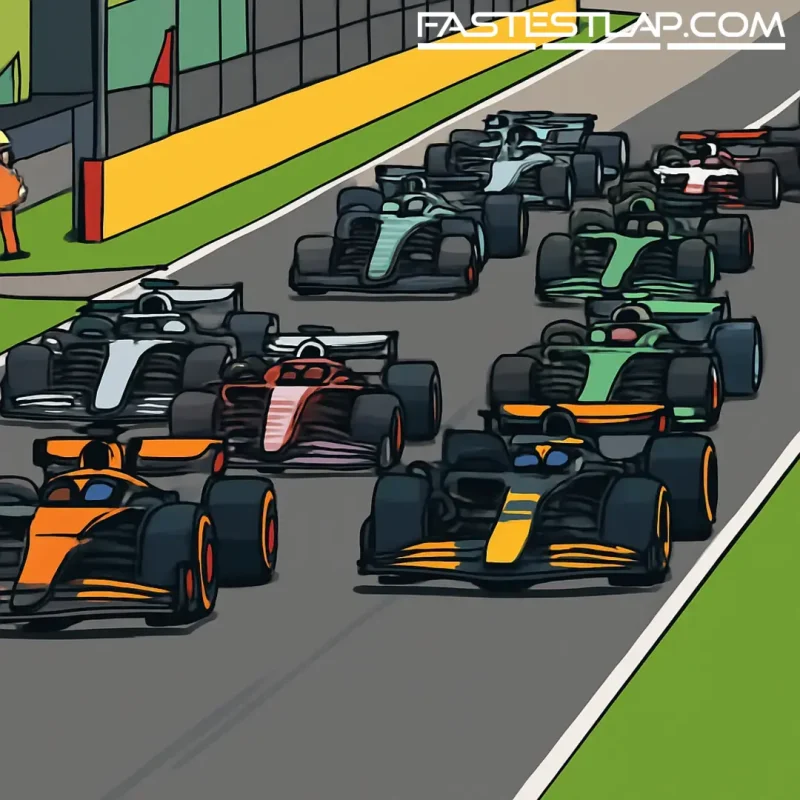Cadillac dry-runs Monza weekend as 2026 F1 debut inches closer
While the rest of the paddock was busy watching Max Verstappen handle Monza with his usual cold efficiency, Cadillac was running its own Italian Grand Prix—quietly, from two continents.
The incoming American outfit staged a full, end-to-end simulation of the Monza race weekend as part of its 2026 build-up, splitting operations between its Silverstone base and its Charlotte hub. Think mission control rather than pit wall: race engineering meetings, strategy calls, comms checks, media drills—the lot. The team even pushed out a set of control-room photos with the caption: “Looks like Silverstone & Charlotte. Feels like Monza. Simulating a weekend in preparation for 2026.”
It’s the sort of homework you don’t see on Drive to Survive, but it’s the right kind of serious.
Cadillac will join the grid next season as F1’s 11th team, the first brand-new entrant since Haas arrived in 2016. The driver lineup is already headline-ready: Valtteri Bottas and Sergio Perez were confirmed last month after a long courtship, with Colton Herta signed as test driver. Herta is expected to race in Formula 2 next year to tick off the final superlicence requirements.
Whether Bottas or Perez were plugged into the Monza sim remains unclear. Bottas was physically at Monza working in his role as Mercedes’ reserve—an arrangement running through the end of 2024—while Perez, who exited Red Bull at the end of last year before sealing this Cadillac return, resurfaced publicly at the US Open tennis final in New York a few hours after the chequered flag.
Team principal Graeme Lowdon trailed this plan weeks ago and didn’t sugarcoat the scale. “We are already simulating race events,” he said. “The next one that we’re doing is Monza and we simulate it as if it is a complete race weekend from start to finish, with full integration of everybody in the team. From Thursday all the way through to Sunday, we’ve got a very clear plan in our buildup to Melbourne next year.”
Lowdon’s emphasis isn’t the car—there isn’t one to run yet—but the people. “The last one we simulated, we probably had 50 or 60 engineering people fully involved over the whole weekend, both in the UK and the US all getting used to working with each other,” he added. “We need to be in a position that when we get to Melbourne, we’re not in a position where people are hearing voices for the first time, or working with each other for the first time.”
That last line is telling. Splitting a new team across two time zones is bold, and it only works if your systems are bulletproof: shared tools, clean handovers, battle-tested comms, and a pit wall that behaves the same on a grey Thursday at Silverstone as it does on a humid Sunday in Singapore. These sims are where you shake out the gremlins—radio protocol, data pipelines, who speaks when, who doesn’t. It’s not glamorous, but it’s the stuff that separates a tidy debut from a chaotic one.
The virtual work sits alongside a busier simulator programme and, crucially, real track miles. Lowdon says Cadillac intends to conduct on-track tests with an F1 car before the end of 2025, operating within the regulations and expected to leverage its relationship with engine supplier Ferrari. With no TPC (Testing of Previous Cars) machine in-house, the team will need to collaborate to get drivers and crew turning laps in something meaningful ahead of pre-season.
There’s a wider point here too. New teams aren’t judged on speed in week one; they’re judged on slickness, on how few unforced errors they make while everyone’s looking. Walk before you run. Cadillac’s approach—locking in experienced race drivers early, giving Herta a clear ladder to a superlicence, and drilling procedures a year out—feels pragmatic rather than performative.
And Monza, of all places, is a smart choice for a dry run. The strategic picture can look simple around the Temple of Speed, but it’s a weekend that exposes operational soft spots—tight margins in qualifying, relentless safety car jeopardy, instant pit wall calls. You don’t need a car on track to learn how your team behaves under those conditions. You just need structure, discipline and a few dozen engineers on headsets who know exactly which voice to trust when the lights go out.
Cadillac’s are getting to know each other now, by design. If they get it right, no one will notice in Melbourne—and that’s kind of the point.




